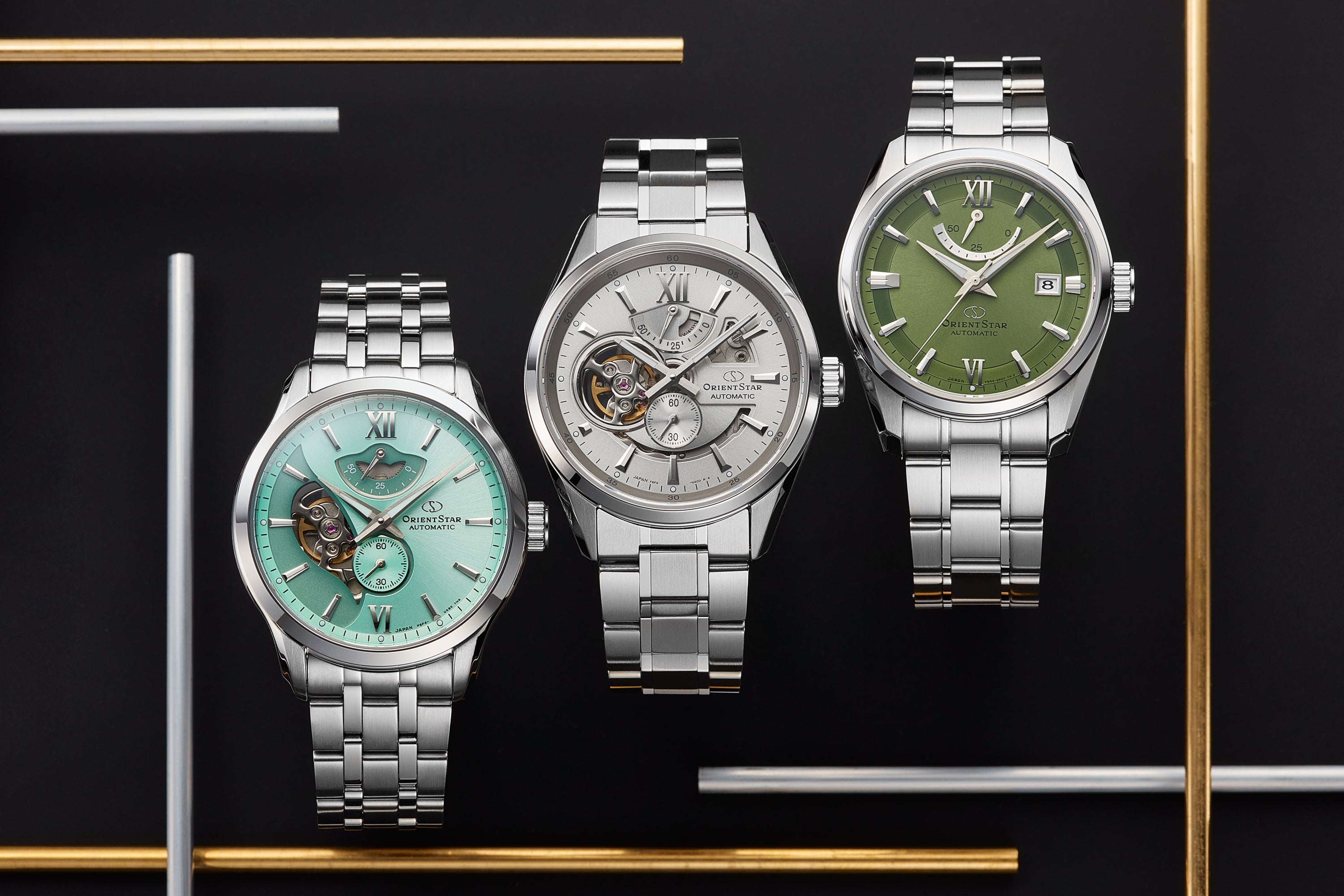Orient Star M34 F8 Date – In Pursuit of Cosmic Blue
2023年10月10日
Last year, Orient Star reorganised its collection ranges and launched M Collections, which incorporates new conceptual designs based on the theme of nebulae and star clusters. Following on from the limited edition M34 F8 Date that was released ahead of the collection’s second instalment, this new regular model uses Orient Star’s new dial production technology to express a deep cosmic blue that is befitting to the collection’s theme.

The regular model of the M34 F8 Date, expressing a delicate blue colour through optical multilayer technology. In addition to the intricate pattern on the dial, the case is also inspired by the Greek hero Perseus from whom the constellation is derived and is crafted with a combination of polished and satin-finishes for a solid look. Automatic mechanical calibre F8N64, 22 jewels, 21,600 vibrations per hour, power reserve of 60 hours, stainless steel case (diameter 40mm, thickness 12.9mm), water resistance to 10 bar (100m). 363,000 yen (tax inclusive).
Photographs by Masahiro Okamura (CROSSOVER)
Edited & Text by Yuzo Takeishi
[Article published in July 2024 issue of the Japanese edition of Chronos]
M34 F8 Date’s New Dial Expression Manipulates Light
In the French astronomer Charles Messier (1730-1817)’s catalogue of nebulae, clusters and galaxies, the open star cluster near the constellation Perseus is given the number M34. The limited edition M34 F8 Date released in March of this year forms part of the lineup of the M34 Collections which is inspired by this star cluster. In addition to details depicting the hero of Greek mythology whom the constellation is named after, the dial incorporates a pattern inspired by the Perseids meteor shower to give the watch a strong and enigmatic look.

The limited edition model features a white dial to depict a meteor shower just before daybreak, while the new regular model has a blue dial that expresses the Perseids meteor shower adorning the midnight sky and gives the watch a slimmer look. Indeed, the deep, clear blue of the dial is truly reminiscent of a cloudless night sky. This new expression of dial colour could only be achieved through the optical multilayer technology developed by Orient Star’s parent company Epson.
The reason we humans can sense colour in the first place is through the functions of photoreceptor cells called cones. There are three types of cones with different wavelength sensitivity characteristics: S cones with high blue (B) sensitivity. M cones with high green (G) sensitivity, and L cones with high red (R) sensitivity. When light enters the eye, these three types of cones each transmit signals to the brain through the optic nerves according to the wavelength. Then, the brain recognises colours according to the ratio of the strength of these signals.


The optical multilayer film technology developed by Epson takes advantage of this colour vision mechanism. Epson had consistently acknowledged the issue that dark or deep-coloured coating on the patterned dials would make the intricate patterns difficult to recognise. In the process of solving this problem, the company focused on optical multilayer film technology, which is considerably thinner than painting.
The technique is characterised by the way in which it controls the appearance of light, so to speak, by applying multiple layers of nearly transparent films so that only the blue wavelength is reflected, resulting in a blue dial. Epson’s development team explains that “rather than mixing colours as in paint or display coloration, this technique makes what is essentially transparent water appear blue in the ocean, or emerald in a volcanic lake.”
As for the production process, first, a brass plate is pressed into a die with intricate patterns engraved by artisans to create the dial. Then, the base layer is wet-plated, and multiple layers of nano-level thin films are built up by vapor deposition. To create the intended colour tone, it took several years to determine the combination of the films as well as fine-tuning the thickness of each film, to achieve the blue colour with a sense of depth that Orient Star desired as exhibited in this timepiece.

Although multilayered, each film layer is thin enough to allow the unique Perseids meteor shower inspired pattern to show through. The blue tones appear to change depending on the angle from which the dial is viewed, evoking the colour transitions of a real night sky. Needless to say, a variety of colour tones can be expressed depending on the composition of the films. By pursuing more realistic dial expressions, Orient Star’s timepieces are sure to provide even more emotionally moving experiences.


![[We’ll Show You! Orient Star Employees and Their Favourite Models] I was attracted to the beautifully expressive brown dial that matched my sense of style!](http://global.orientstar-watch.com/cdn/shop/articles/20240801_ORIENT1596.jpg?v=1740627185)
![[We’ll Show You! Orient Star Employees and Their Favourite Models] Matches perfectly with the business casual look in the office! I instantly fell in love with the round silhouette and semi skeleton structure!](http://global.orientstar-watch.com/cdn/shop/articles/20240723_ORIENT1915.jpg?v=1738212104)
